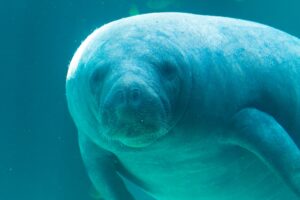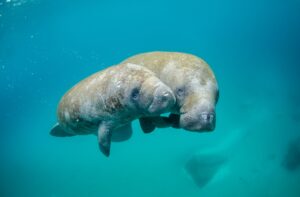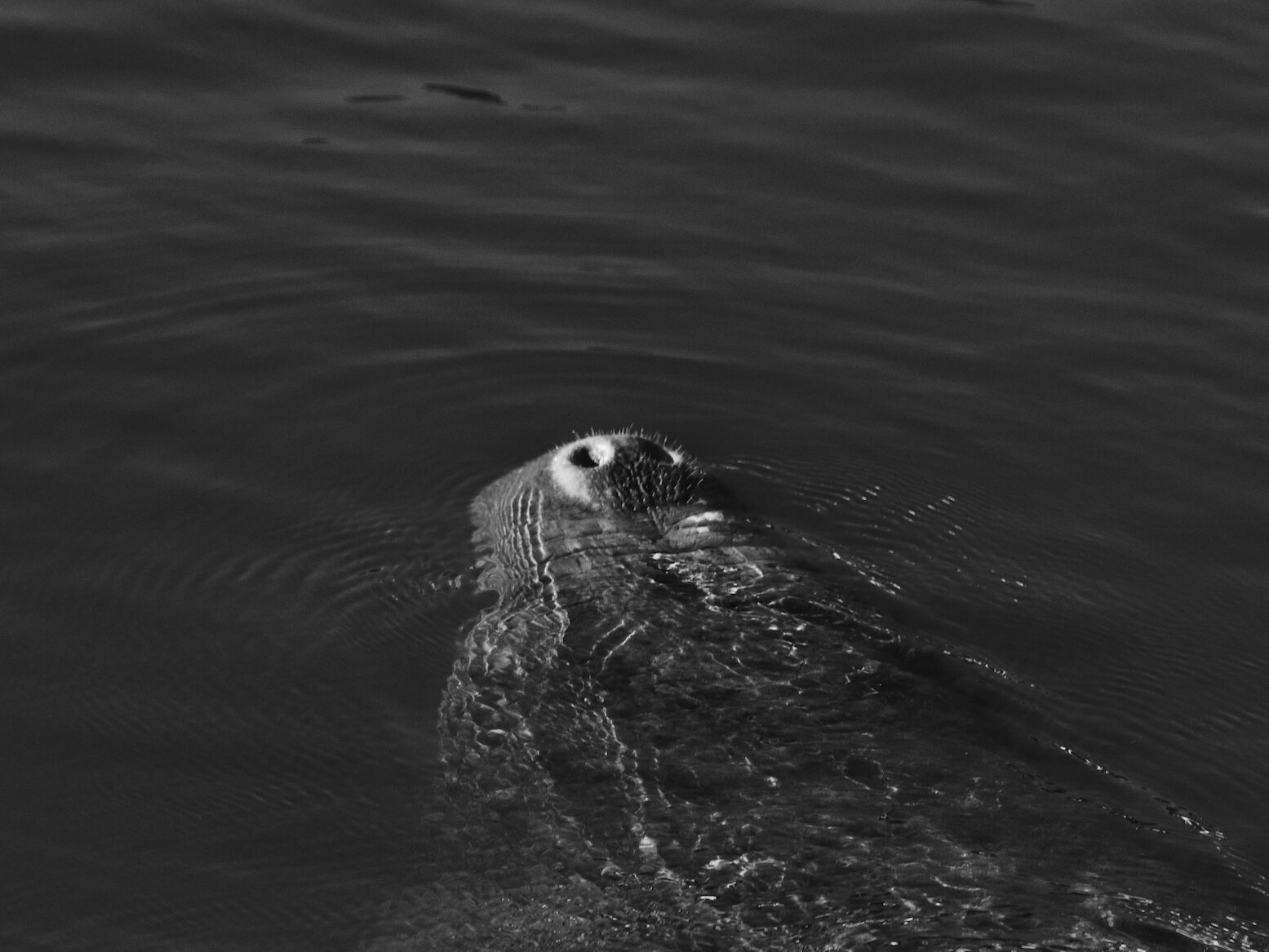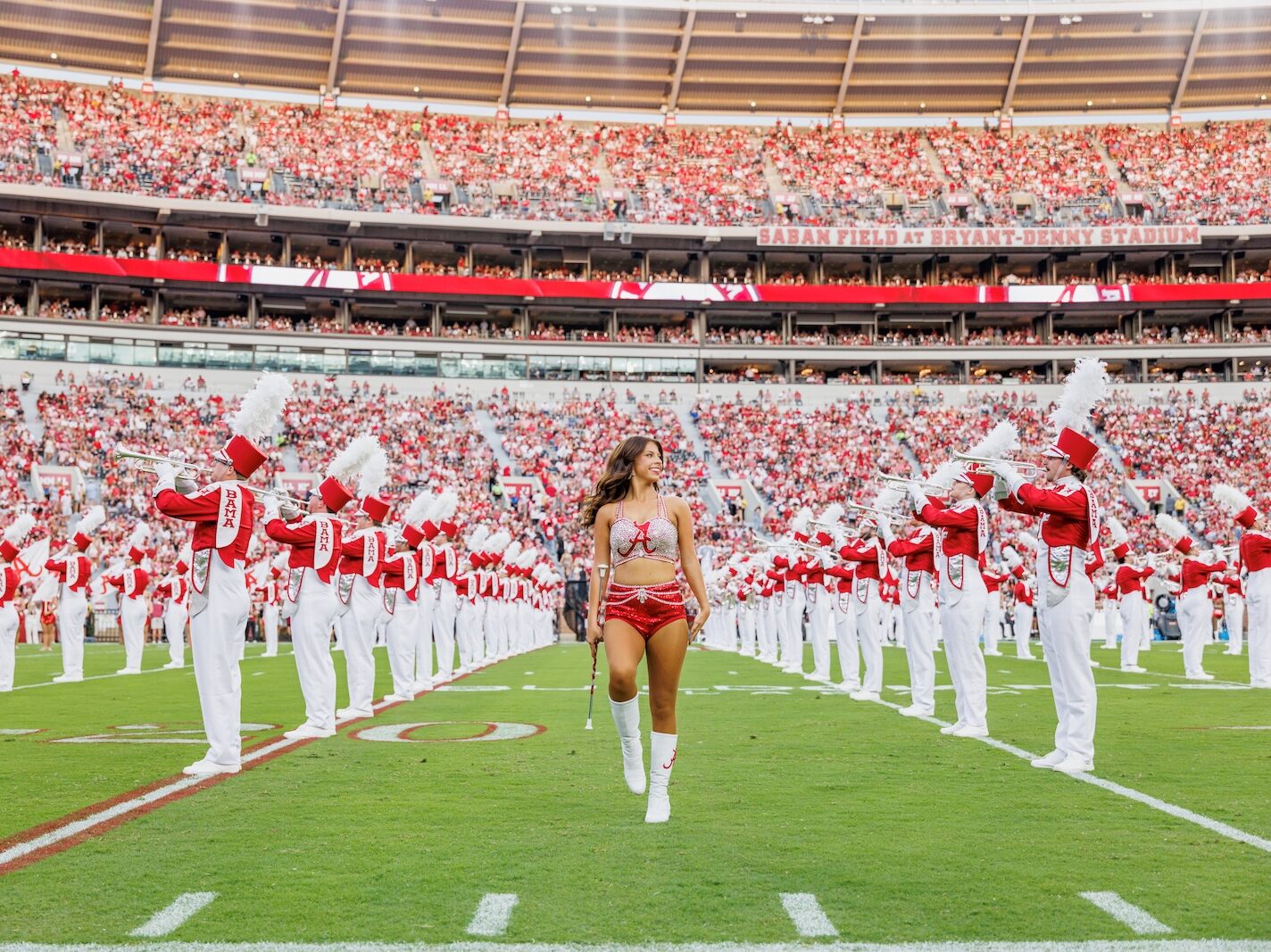Manatees, often referred to as “sea cows,” are iconic marine mammals known for their slow-moving nature and gentle demeanor. While there are multiple species of manatee, it is the West Indian manatee (Trichechus manatus) that resides in the southeastern USA. West Indian manatees migrate to the waters of Alabama, residing locally primarily during warmer months. Alabama’s waterways provide a unique and vital habitat for these fascinating creatures, drawing attention to their migratory patterns and the importance of conservation efforts.

(Robin Teng/Unsplash)
Migratory Visitors
Manatees in Alabama are primarily seasonal visitors, but they are sighted in Alabama and adjacent waters of the northern Gulf of Mexico year-round in some years. Some are known to migrate from Florida during the spring to use local habitat and food resources. Mobile Bay, including the waters of the Mobile-Tensaw River Delta, Dog River, and other tributaries, is a known migratory endpoint for many manatees migrating west during warmer months (Cloyed et al., 2021). Their movements are driven by seasonal temperatures, characteristically low salinity in the region, and their need to graze on seagrass and other aquatic vegetation. The Dauphin Island Sea Lab’s Manatee Sighting Network reports that more and more sightings have occurred in Alabama waters over the years, coincidental with population recovery and rising sea surface temperatures, particularly during the fall migration period. Currently, there is an estimated population of nearly 10,000 West Indian manatees that live in U.S. waters, with their primary range in peninsular Florida, but seasonal range extending from as far north as Massachusetts and southwest to the Mexico border (Gowan et al., 2023). Researchers are working to collect data to find out more about their precise locations and migratory routes throughout the year, and their resource use within Alabama waters. What is known is that Alabama’s rivers and estuaries offer abundant resources for manatees, making the state an important part of their range. Ruth H. Carmichael, Ph.D., states that “we know manatees use Alabama waters for all of their normal life history events; they have been observed mating and rearing calves, are known to give birth, forage, cavort, travel through and mill in our waterways”. Researchers like Carmichael are using tracking devices and citizen-reported sightings to map manatee movements and better understand their movements through time.
A Fragile Existence
Manatees face numerous challenges in Alabama’s waterways. The primary cause of manatee mortality along the northern Gulf is cold stress that results from spending time in waters below 68°F (20°C) for an extended time period without refuge (Hieb et al., 2017). Boat strikes are also a threat because manatees swim slowly, often in shallow waters close to the shoreline and within inland waterways. Manatees are difficult for boaters to see, particularly in often turbid (aka “murky”) Alabama waters because they do not have a dorsal fin or other obvious body features that extend above the water surface. Habitat loss due to development and pollution also affects their survival throughout their range.
To address these threats, Alabama’s conservation organizations, such as the Dauphin Island Sea Lab’s Manatee Sighting Network, play a crucial role. They monitor manatee populations, educate the public about safe boating practices, and promote manatee-safe boating and habitat preservation awareness.
Conservation Success Stories
Efforts to protect manatees in Alabama have yielded promising results. Public awareness campaigns have increased understanding of these creatures and their ecological importance. They are considered as ‘grazers’ in coastal habitats. Carmichael explains that in coastal Alabama “we don’t have a lot of seagrass in our area”; manatees “are mostly using other submerged aquatic vegetation and wetland vegetation. They are considered an umbrella species whose presence can indicate a high-quality habitat for a wide range of species. They also eat very large quantities of vegetation that can be a nuisance to boaters and swimmers so they provide a nice service in managing overgrowth”.
Due to early efforts by the DISL/MSN team, manatees were reclassified by the Alabama Natural Heritage Program from ‘Accidental’ to ‘Endangered’ nearly two decades ago. Carmichael shared that the manatee was also designated as the State of Alabama’s “official marine mammal”- a designation assigned by the State after a group of school children made a formal request for it to become so.
The DISL/MSN citizen science program was instrumental in encouraging residents and boaters to report manatee sightings, contributing valuable data for research. Since that time, sightings have become more frequent, and the number and duration of seasonal visits have been documented to be rising, indicating that Alabama’s waterways are becoming a more important habitat for these marine mammals (Heib et al., 2017). Carmichael shared that just within Alabama, there are now 200 to 400 sightings per year. This collaborative approach has strengthened conservation efforts and fostered a sense of community responsibility for protecting manatees on a range-wide level, supporting regional and Federal conservation efforts. At the Federal level, manatees are protected species, listed as ‘Threatened’. But just how does a species become listed as a protected species? Carmichael explains that an “oversight agency (United States Fish & Wildlife Service in the case of manatees) makes the designation based on scientific data, typically including abundance estimates and consideration of type and level of threats” to the species.

(NOAA/Unsplash)
How You Can Help
There are many ways individuals can contribute to manatee conservation in Alabama:
- Practice Responsible Boating: Follow no-wake zones and stay vigilant to avoid striking manatees. Keep your boats out of no-motor zones to avoid damaging seagrass beds and other habitats.
- Report Sightings: Share manatee sightings with organizations like the Manatee Sighting Network to aid in research and tracking. Please report manatee sightings as soon as possible to DISL/MSN by dialing 1-866-493-5803. If animals appear sick or distressed, choose the emergency reporting option when prompted. Non-emergency sightings can also be reported online at manatee.disl.edu.
-
Support Conservation Efforts: Donate to or volunteer with organizations dedicated to protecting manatees and their habitats. To donate to support DISL/MSN research and stranding response or for more information on manatees in the area and recommendations on safely sharing our local waterways with these protected marine mammals, visit manatee.disl.edu.
-
Spread Awareness: Educate others about the importance of manatees and the challenges they face.
Conclusion
Manatees are a cherished part of Alabama’s natural heritage, offering residents and visitors a glimpse of one of nature’s most gentle creatures. Protecting these migratory giants requires a collective effort, combining science, public engagement, and sustainable practices. With continued conservation efforts, Alabama can remain a welcoming stopover for manatees for generations to come.
Sources Sited:
Cloyed, C.S., E.E. Hieb, K.P. DaCosta, M. Ross, and R.H. Carmichael (2021). West Indian manatees use partial migration to expand their geographic range into the northern Gulf of Mexico. Frontiers in Marine Science. 8:725837. https://doi.org/10.3389/fmars.2021.725837
Dauphin Island Sea Lab’s Manatee Sighting Network. https://www.disl.edu/ research/marine-mammal-research-program/manatee/
Gowen, T., Edwards, H., Kyrgyzstan, A., Martin, J., & Hostetler, J. (2023). 2021- 2022 Statewide Abundance Estimates for the Florida Manatee. Report prepared for the Florida Fish and Wildlife Conservation Commission. https://f50006a.eos-intl.net/ELIBSQL12_F50006A_Documents/Final_1.5_ TR27_231027.pdf
Hieb, E.E., R.H. Carmichael, A. Aven, C. Nelson-Seely, N. Taylor. (2017). Sighting demographics of the West Indian manatee (Trichechus manatus) in the north-central Gulf of Mexico supported by citizen-sourced data. Endangered Species Research. 32:321-332. https://doi.org/10.3354/esr00817
This story first appeared in Alabama Wildlife Magazine with additional contributing authors Jackie McGonigal, Wind & Water Learning Center Coordinator, City of Orange Beach Coastal Resources Department; and Special contributions from Ruth H. Carmichael, Ph.D., Senior Scientist and Professor of Marine Sciences, University of South Alabama.




